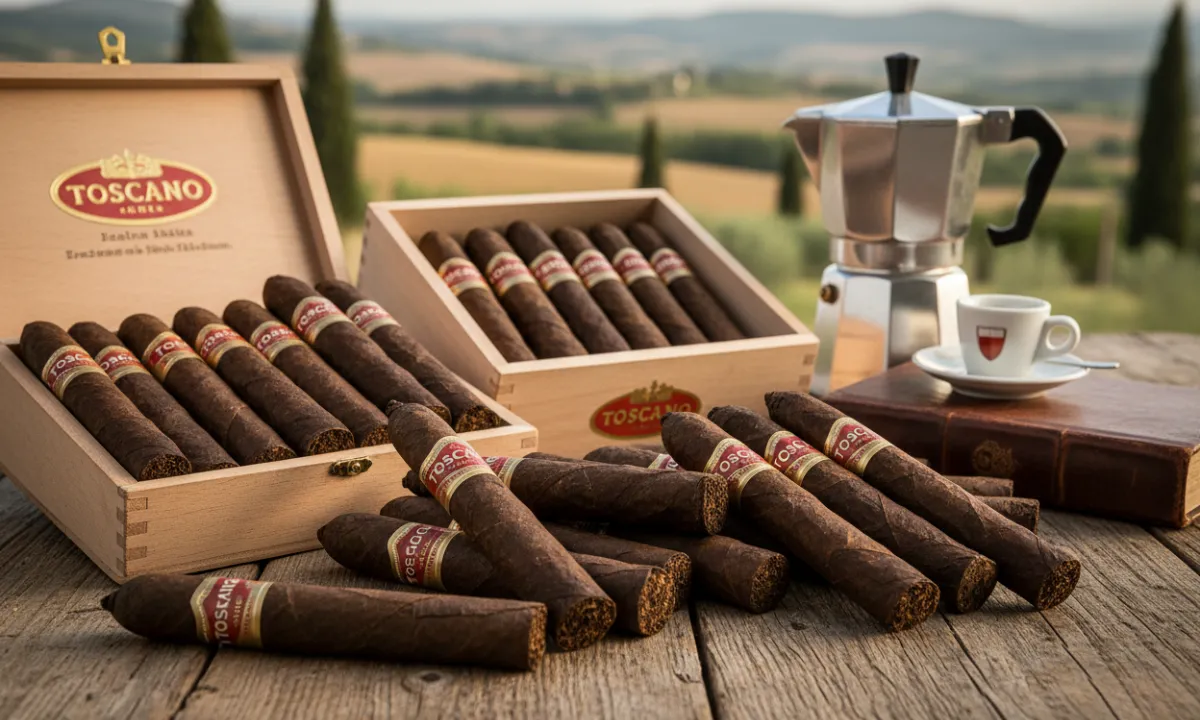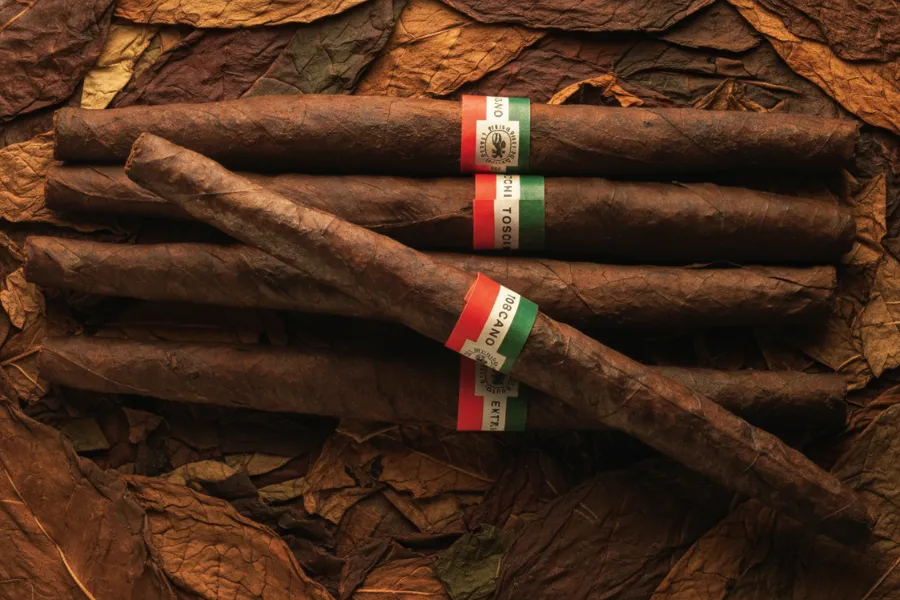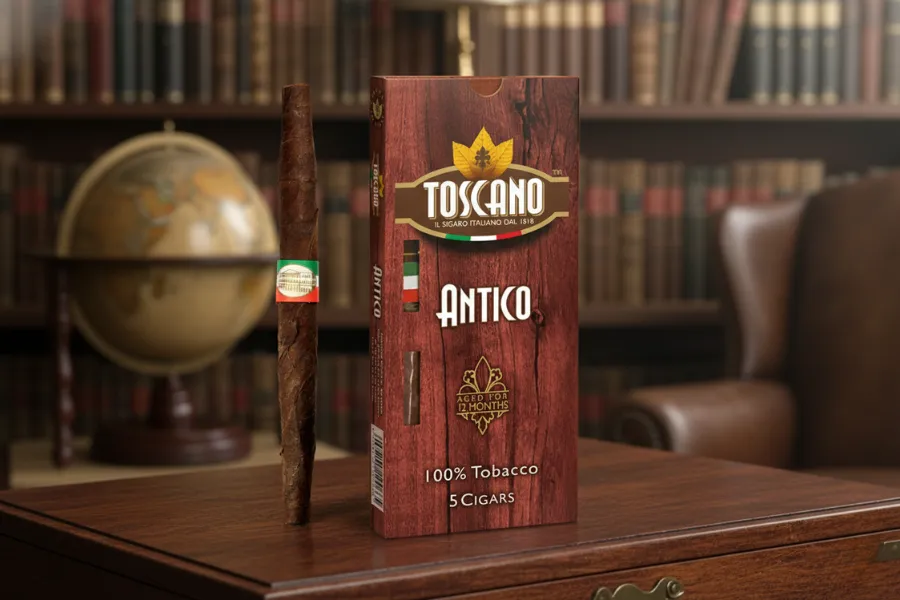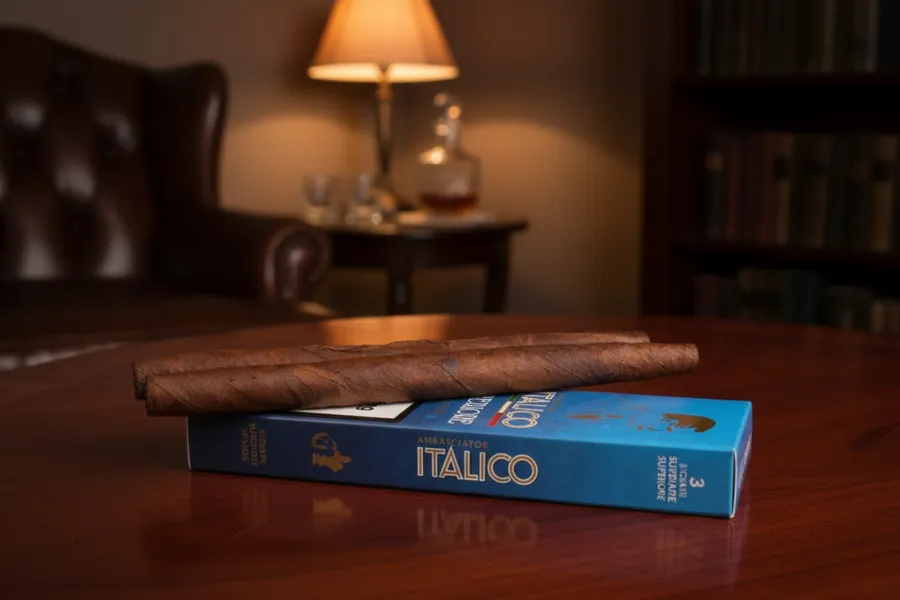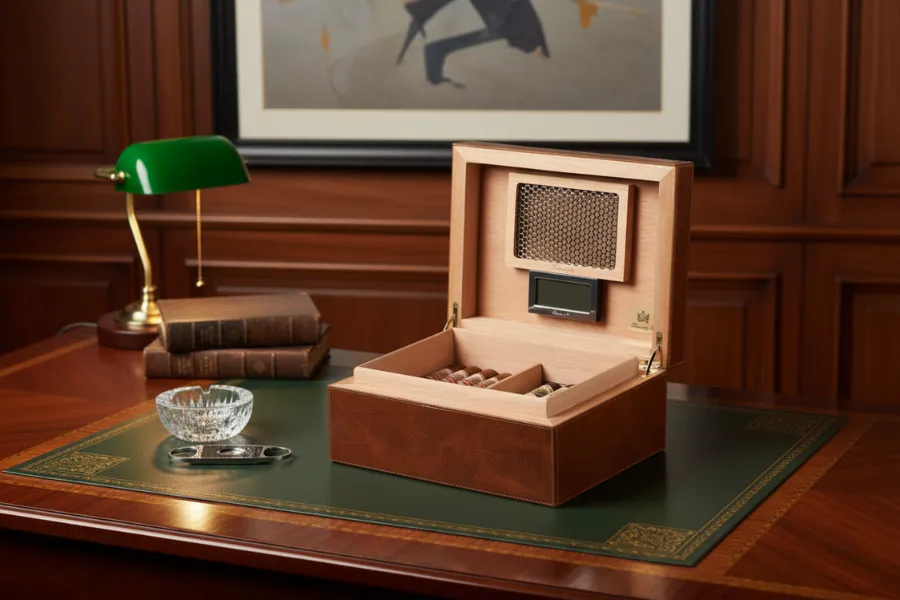Share This Post
When I first tried a Toscano, I thought something was wrong — it looked rough, smelled like campfire, and didn’t need my humidor. I figured I had bought a dud. Instead, I had discovered a whole style. Italian cigars have been around for over 200 years, yet most cigar lovers in the U.S. haven’t tried them. They’re different, and that’s the point. These smokes save you money (no humidor), give bold flavors you won’t find in Caribbean cigars, and are easy to share or travel with. If you’re curious, I’ll show you what to try and how to store them.
What Are Italian Cigars and How Do They Differ from Other Cigars?
Put simply, an Italian cigar is a style of cigar mostly made in Italy that often uses fire-cured tobacco. That gives it a smokier, earthier flavor than Caribbean cigars. Many are shaped as a cheroot — a short, wide cigar with both ends open. (Cheroot: a small cigar with both ends open for easy lighting.)
Here’s a quick comparison:
- Caribbean/Cuban cigars: air-cured, smoother, creamy, cedar and spice notes.
- Italian cigars: fire-cured, bolder, smoky, espresso, and leather notes.
Concrete benefits:
- They don’t need long-term humid storage.
- They handle travel and rougher handling better.
- They pair well with coffee and strong drinks.
If you like dark coffee, smoked meat, or bold flavors, you’ll probably enjoy Italian smokes. I did — and it changed how I think about a cigar ritual.
The Fire-Cured Difference
Fire-curing means the tobacco leaves are dried over real smoke. Think brisket or smoked cheese: the smoke becomes part of the flavor.
So while Cuban tobacco air-dries like herbs laid out in the sun, Italian tobacco gets smoked like brisket.
- Caribbean cigars often taste like cream, cedar, and mild spice.
- Italian cigars taste like espresso, leather, and campfire.
Your first puff feels bold — like switching from light roast to dark roast coffee. It’s different, not better or worse. If you enjoy strong coffee or grilled food, this will click for you. I remember lighting a Toscano after breakfast, espresso, and thinking: yes, this was made for mornings like this.
No cigar humidor required
This is one of the biggest perks. Italian cigars are like beef jerky; Cuban cigars are like fresh steak. One needs refrigeration, the other doesn’t.
Practical savings:
- Skip a $150–300 humidor.
- Avoid monthly Boveda packs and hygrometer fuss ($20/year saved).
- No humidity drama when you travel or fly.
Storage rule: keep them in a drawer at room temperature. I keep a small box of Toscano cigars in a kitchen drawer, and they’re fine for months — no fuss.
If you’re starting out, that convenience is huge. No tech, no calibration, no stress.
Are there any Italian cigars?
Yes. Italy doesn’t just make wine and pasta — it produces millions of cigars every year. The biggest name is Toscano, which holds roughly 80% of the Italian market. Other makers include Ambasciatore Italico and smaller regional brands. You’ll also find small cigar options like Toscanello cigars and a range of premium cigarillos.
A common fact: Clint Eastwood in spaghetti westerns often had a cheroot in his mouth — that rough, short cigar he smoked was typically an Italian-style smoke. Like Italian wine, these cigars reflect a long craft tradition most people haven’t explored.
Why Are Toscano Cigars Considered the Icon of Italian Cigars?
When people say Italian cigars, they usually mean Toscano. These cigars have a long history and a strong personality: rough, smoky, and straightforward.
The Rain-Soaked Origin Story
Legend says a tobacco shipment got soaked in rain in 1815. The wet leaves fermented by accident and developed a rich, unusual flavor. Instead of throwing it away, the Grand Duke of Tuscany said, “Keep making it like this.” They did, and that process still shapes the flavor today.
Two hundred years later, they still use fermentation and fire-curing.
The Ammezzato Tradition
Toscano Cigars Embodies the Ammezzato Tradition. Ammezzato means “half.” The tradition is to cut a cigar in half and share. Think of it like breaking bread, but with a smoke.
Benefits:
- One 30-minute cigar becomes two 15-minute coffee breaks.
- Great for short social moments or travel.
- Easy: cut through the middle band with a sharp knife and light each half.
I once cut a Toscano Garibaldi in half on a road trip and handed one piece to a friend. We both had a perfect 15-minute smoke and a longer conversation than the ride would normally allow. Toscano Cigars makes sharing simple and personal.
Which Italian Cigar Brands Are Most Popular?
If you want a clear shopping list, here it is. Prices and flavors are approximate.
Toscano Varieties for Every Smoker:
- Toscano Classico ($4–5): Your training wheels — medium strength with leather and coffee notes; start here.
- Toscano Garibaldi ($4): The breakfast cigar — mild with cocoa sweetness; pairs great with cappuccino.
- Toscano Antico ($5–6): The full experience — bold, peppery, intense for when you’re ready to graduate.
Where to find them: try CigarPlace.biz, JRCigars, or local Italian delis and tobacconists. Search terms that help: Toscano cigars for sale, Toscano cigars near me, or Toscano order online.
Alternative Italian Brands Worth Trying:
- Ambasciatore Italico ($7–8): Smoother and a bit more complex — good when you want to impress without showing off.
- De Nobil / Parodi ($2–3): A budget tester — made in the USA in the Italian style; good for sampling.
- Look for other options like Cao Italia cigar, Oio cigars, and premium cigarillos if you want variety.
I once bought a sampler with Toscanello cigars, some premium cigarillos, and a small cigar or two — it was the best $25 I spent that month because I learned what I liked.
What Are the Best Italian Cigars to Pair with Cigar Humidors for Long-Term Aging?
Short answer: Most Italian cigars don’t belong in a humidor.
The Humidor Myth
Putting Italian cigars in a humidor is like storing crackers in a steam room — they’ll go soggy and lose their edge. These cigars are intentionally dry; humidity ruins how they burn and taste.
Proper storage:
- Room temperature: 65–72°F (18–22°C).
- Dry place, away from sunlight.
- Keep in original packaging or a simple cardboard box.
Exception: a few premium lines (some Ambasciatore Italico) can handle up to 55% relative humidity, but that’s rare.
Mixing Collections
If you own both Caribbean and Italian cigars, separate them. Trust me.
Easy solutions:
- Keep Cubans and Dominican cigars in your humidor.
- Keep Toscanos in a drawer or sealed box at room temperature.
- Or use two airtight Tupperware containers labeled with the type and humidity level.
Personal mistake: I once ruined about $50 worth of Toscano by storing them in my humidor with Cubans — the change in humidity made them soggy and harsh. I still cringe thinking about it. Learn from my expensive error.
Conclusion
Italian cigars give you something different: no expensive storage gear, bold smoky flavors, and a 200-year tradition to explore. They won’t replace your Cubans or Dominicans, but they’ll give you options — and sometimes those options fit life better. No humidor, easy travel, and great half-smokes for sharing.
Start simple this week: buy a Toscano Classico, a Garibaldi, and one Antico or another Garibaldi to cut and share. Try them with coffee, on a short walk, or during a road trip. I promise you’ll learn something new about what you like.
FAQ
Are Italian cigars stronger than Cuban cigars?
Usually yes — most Italian cigars are medium-full to full strength, while Cubans range from mild to full.
Can I relight an Italian cigar the next day?
Absolutely — trim about 1/4 inch off the ash end and relight.
Where can I buy authentic Italian cigars in the US?
Online: CigarPlace.biz, JRCigars, Famous Smoke Shop; or check Italian delis and local tobacconists.
Related Post's
Featured Video
Provide an email subscription feature for users to sign up for updates.
Follow the world of watches and cigars for exclusive content!
By subscribing to our newsletter, you will be the first to receive notifications of our latest articles, popular posts and special events.

